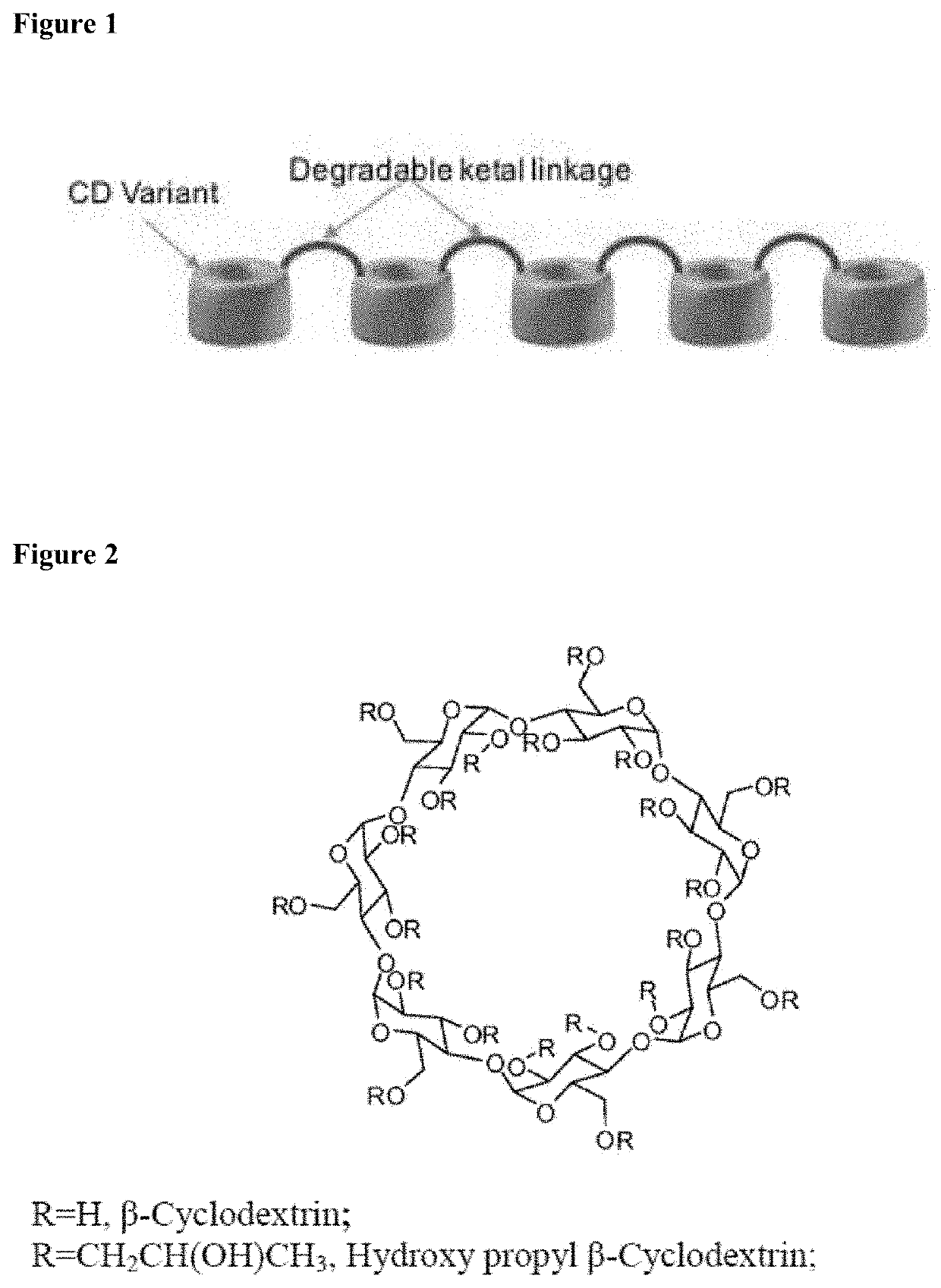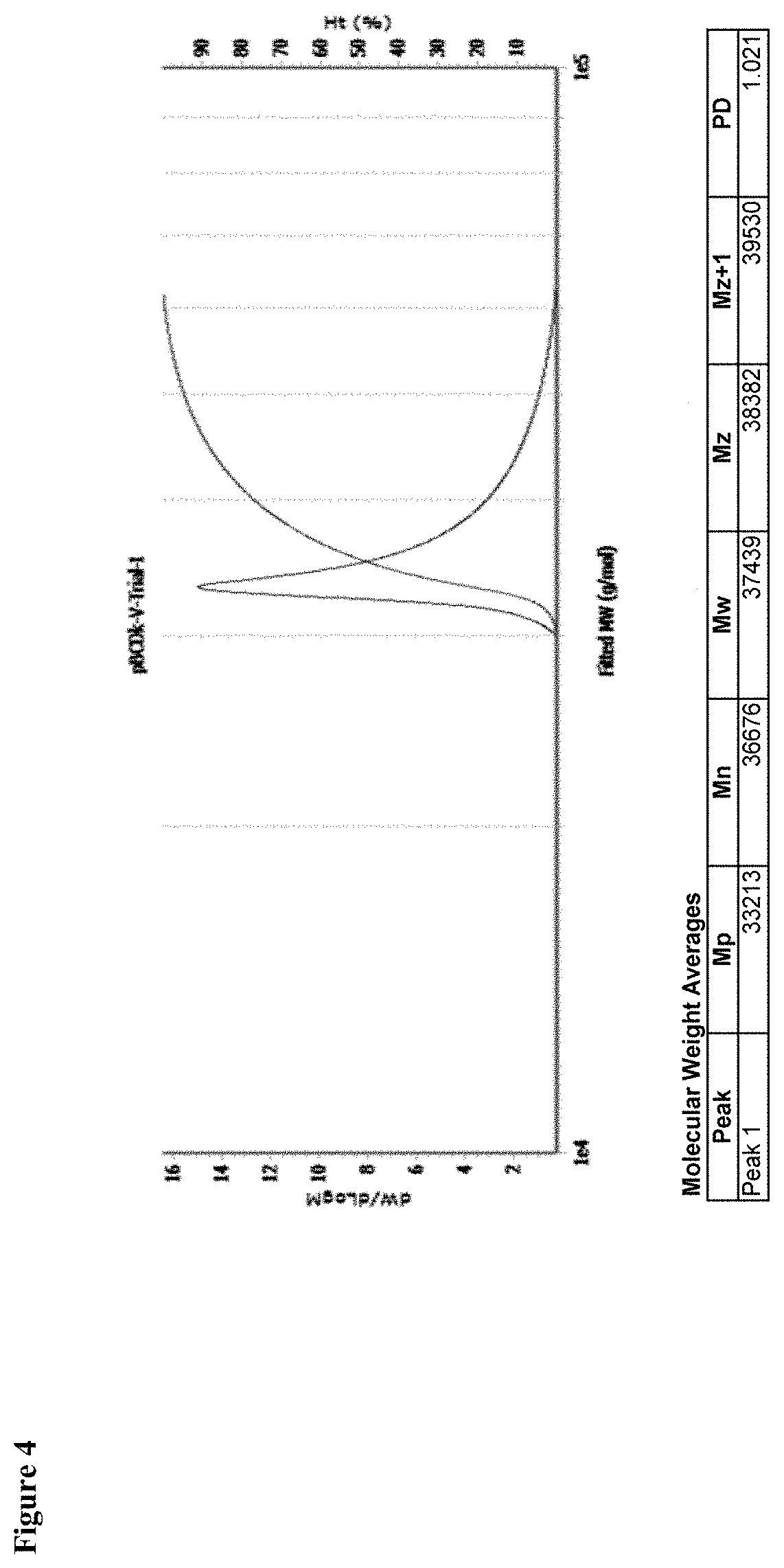Cyclodextrin based polymers, methods, compositions and applications thereof
a polymer and cyclodextrin technology, applied in the field of macromolecular therapeutic agents, can solve the problems of limited treatment options, cholesterol, lipid disorders, and the like, and achieve the effect of improving the bioavailability of a therapeutically active agent administered with a polymer of the present disclosure and improving the permeation of the blood-brain barrier of a therapeutically active agen
- Summary
- Abstract
- Description
- Claims
- Application Information
AI Technical Summary
Benefits of technology
Problems solved by technology
Method used
Image
Examples
example 1
Procedure for Synthesis of pbCDK Polymer
[0263]Step 1: Synthesis of biphenyl-4,4′-disulfonatecapped β-CD (1)
[0264]To a solution of β-CD (about 10 g, 8.81 mmol) in about 250 ml of freshly distilled anhydrous pyridine, about 2.78 g (7.93 mmol) of biphenyl-4,4-disulfonylchloride is added in four equal portions at about 15 minute intervals. The resulting solution is stirred at about 60° C. under nitrogen atmosphere for an additional 3 hours and the solvent was removed to dryness in vacuum at room temperature. The residue was subjected to column chromatography using gradient elution of 10-20% water in acetonitrile. Fractions were analyzed by HPLC and the appropriate fractions were combined. After removing acetonitrile on a rotary evaporator, the resulting aqueous suspension was lyophilized to dryness. This procedure gave about 5.42 g (40% yield) of βCD-(OTs)2 (Compound 1). 1H NMR (300 MHz, H2O) δ: 3.58-3.65 (t, 19H), 5-5.3 (q, 7H), 3.9-4.3 (t, 7H), 3-3.2 (d, 7H), 3.5-3.7 (t, 14H), 7.6-8.1...
example 2
In Vitro Cellular Uptake Study
[0276]Polymer A was labelled with Tetramethylrhodamine (TRITC) dye to obtain Polymer A-TRITC. NPC patient derived fibroblasts were seeded in 8 well chamber slides at a density of 6000 cells / well. 50 μM of Polymer A-TRITC was added to the wells and the cells were allowed to incubate for 4 h. At the end of the 4 h incubation, the spent media was removed and the cells were washed with PBS thrice to remove any unbound polymer. Imaging was performed using the Floid Cell Imaging System. (FIG. 8).
example 3
Subcutaneous Administration of Polymer A in Mice
[0277]An HPLC-UV based bioanalytical method was developed in mouse plasma for Polymer A. The method was linear between 13.4 and 500 μg / ml plasma, with an LLOQ of 13.4 μg / ml, was precise and accurate. The recovery was >90% from plasma and tissues. The PK and tissue distribution of pBCDK was performed in mice following a single sub-cutaneous dose of 100 mg / kg. The concentration of Polymer A in various cells were monitored over 24 h. Uptake and retention of Polymer A in organs including brain, lungs, liver, spleen, and kidney were observed (FIG. 9). Error bars in FIG. 9 are SEM.
PUM
| Property | Measurement | Unit |
|---|---|---|
| polydispersity index | aaaaa | aaaaa |
| polydispersity index | aaaaa | aaaaa |
| polydispersity index | aaaaa | aaaaa |
Abstract
Description
Claims
Application Information
 Login to View More
Login to View More - R&D
- Intellectual Property
- Life Sciences
- Materials
- Tech Scout
- Unparalleled Data Quality
- Higher Quality Content
- 60% Fewer Hallucinations
Browse by: Latest US Patents, China's latest patents, Technical Efficacy Thesaurus, Application Domain, Technology Topic, Popular Technical Reports.
© 2025 PatSnap. All rights reserved.Legal|Privacy policy|Modern Slavery Act Transparency Statement|Sitemap|About US| Contact US: help@patsnap.com



